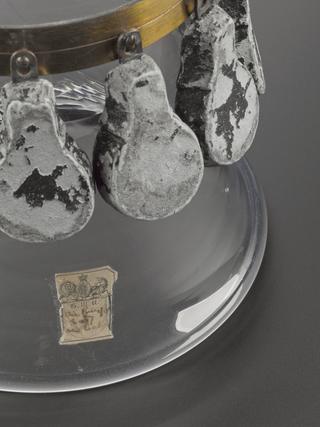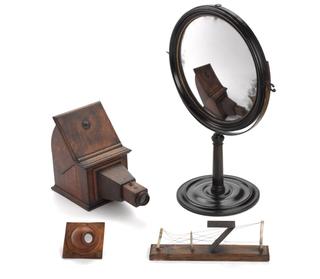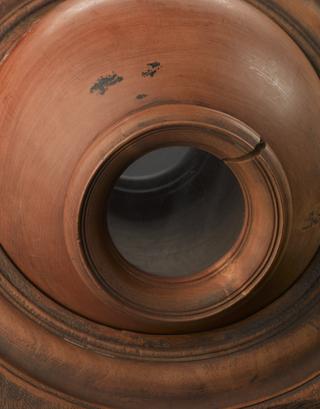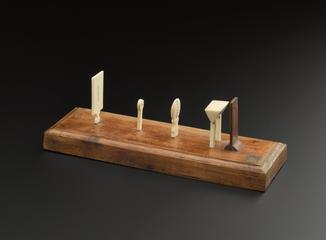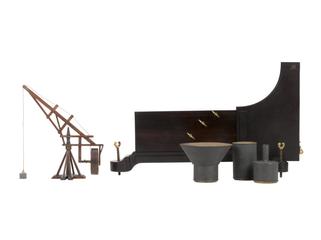
Compound Axis in Peritrochio.
- Made:
- circa 1700-1751 in London
- maker:
- George Graham




Compound axis in peritrochio
The principle of the wheel and axle (the lifting of a large load by a much smaller one) is utilised in the windless and capstan. This object illustrates how, by the addition of a pair of gear wheels, a greatly increased mechanical advantage can be obtained.
A small weight is supported by the string wrapped around the brass pulley, of diameter 2 inches; the steel axle of this wheel also carries small pinion of eight teeth, which engages with a larger brass cog, having forty teeth. This larger cog has a steel axle, of diameter ¼ inch, around which is wound the cord supporting the large weight. The mechanical advantage of the compound system mis 40, whereas without the gearing a value of only 8 would be available.
Details
- Category:
- King George III
- Object Number:
- 1927-1873
- Materials:
- brass, steel, mahogany (wood) and cotton (fibre)
- Measurements:
-
overall: 490 mm x 250 mm x 200 mm, 1.4 kg
- type:
- scientific instruments
- credit:
- King's College, London
